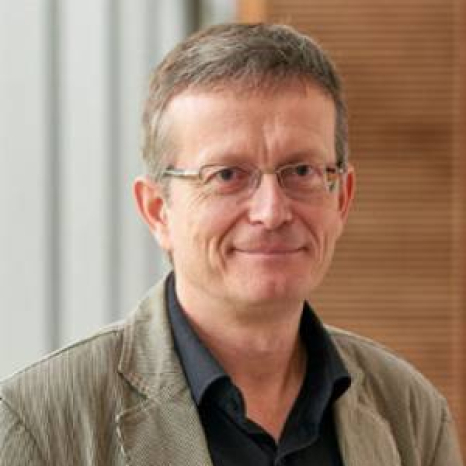Digital monument technologies
At a glance
Faculty
Academic degree
Master of Science (M.Sc.)
Form of study
Consecutive full-time Master’s degree (part-time possible)
Standard period of study
4 semesters (incl. Master’s thesis), 120 ECTS
Place of study
Bamberg and Coburg
Language of instruction
German
Start of studies
Winter semester (October 1)
Admission requirements
First university degree with a standard period of study of at least six semesters amounting to 180 ECTS credits and an overall grade of 3.0 or better in a related degree program
Accreditation
accredited by ACQUIN
Registration
from 14.05.
until 05.10.
(for the winter semester)
Profile of the Master's program
Innovative approaches to digitization are now being taken in the preservation of historical monuments, museum studies and the protection of cultural assets. The digital recording of buildings and objects is now standard practice in heritage conservation. This applies both to the basic assessment of listed buildings and to the permanent monitoring of a building’s condition using intelligent sensor systems.
![]() “The Master’s degree program >Digital Monument Technologies< is unique in Germany and
“The Master’s degree program >Digital Monument Technologies< is unique in Germany and
offers you an overview of the possibilities of current technology.”
Program director
You can deepen your knowledge in the application of such technologies and will be trained to work at the interface of heritage conservation and technology. The Digital Monument Technologies degree program is offered in cooperation with the University of Bamberg. The University of Bamberg and Coburg University of applied sciences and arts enjoy an excellent reputation in the monument, object and engineering sciences as well as in application-oriented digital technologies. The interdisciplinary team of lecturers, the subject-specific differentiation and the technical equipment guarantee a state-of-the-art education. Lectures take place in Coburg and Bamberg.
You can also find more information on the University of Bamberg’s study program page: Digital Monument Technologies
Course content and schedule
The degree program comprises four module groups: Fundamentals, specialization, profiling and Master’s thesis. In the first section, 8-9 out of 15 foundation modules are taken to supplement knowledge. In the second section, students choose 3 specialization and 3 profiling modules from various options in order to acquire in-depth knowledge and practice-oriented skills.
Information on the content and structure of the degree program as well as the study and
examination regulations can also be found on the University of Bamberg website.
Module group Basics
Students receive introductions to the subjects relevant to the application of digital technologies in heritage conservation. You must acquire 45 ECTS in the fundamentals. With the exception of GL-6 (10 ECTS), each of the foundation modules has 5 ECTS.
- M-DDT-GL-1 “Introduction to digital monument technologies”
- M-DDT-GL-2 “Fundamentals and theories of heritage conservation and their significance for digital heritage technologies”
- M-DDT-GL-3 “Historical building constructions/wooden constructions”
- M-DDT-GL-4 “Fundamentals of technical drawing and CAD”
- M-DDT-GL-5 “Computer Science for Cultural Studies”
- M-DDT-GL-6 “Imaging techniques and 3D acquisition”
- M-DDT-GL-7 “Digital Archiving and Digital Humanities”
- M-DDT-GL-8 “Fundamentals of Restoration Science”
- M-DDT-GL-9 “Building physics on listed buildings”
- M-DDT-GL-10 “Historical materials and supporting structures”
- M-DDT-GL-11 “Signal analysis and measurement technology”
- M-DDT-GL-12 “Virtual and digital modeling”
- M-DDT-GL-13 “Introduction to the history of architecture and urban planning”
- M-DDT-GL 14 “Tendering and awarding/HOAI/Law on monuments”
- M-DDT-GL 15 “Deformation-compliant measurement”
The modules M-DDT-GL-1 “Introduction to Digital Monument Technologies”, M-DDT-GL-2 “Fundamentals and Theories of Monument Conservation and their Significance for Digital Monument Technologies” and M-DDT-GL-15 “Deformation-compliant Surveying” are compulsory modules, all others are compulsory elective modules. They serve to gain an overview of the subjects involved in the degree program and to acquire specialist knowledge in the topics constituting digital monument technologies.
Module group specialization
Students choose from a total of 8 modules with the following specializations, from which they can freely select their three specialization modules (reference to the consecutive regulation of profiling). 15 ECTS must be achieved in the specialization modules. Each module has 5 ECTS.
- M-DDT-V-1 “Spatial modeling and BIM 1”
- M-DDT-V-2 “Structural analysis/repair/simulation 1”
- M-DDT-V-3 “Monitoring and digital system analysis 1”
- M-DDT-V-4 “Building physics assessment and refurbishment 1”
- M-DDT-V-5 “Methods of restoration science 1”
- M-DDT-V-6 “Drafting and design 1”
- M-DDT-V-7 “Programming for Cultural Studies DDT”
- M-DDT-V-8 “Web technologies for DDT”
At the same time, this also determines the associated subject focus in the practice and
research-oriented profiling modules. The in-depth modules serve to impart specialized knowledge and prepare the content of the profiling courses.
Profiling module group
Students choose three modules from a selection of 9 profiling modules that match the specialization courses they have completed. 30 ECTS must be achieved. Each profiling module has 10 ECTS credits and is consecutive to a specialization module, with the exception of P-7, P-8 and P-9.
- M-DDT-P-1 “Spatial modeling and BIM 2”
- M-DDT-P-2 “Structural analysis/repair/simulation 2”
- M-DDT-P-3 “Monitoring and Digital System Analysis 22
- M-DDT-P-4 “Building physics assessment and refurbishment 2”
- M-DDT-P-5 “Methods of restoration science 2”
- M-DDT-P-6 “Drafting and Design 2”
- M-DDT-P-7 “Media Informatics for DDT”
- M-DDT-P-8 “Computer graphics and animation for DDT”
- M-DDT-P-9 “Digital Libraries and Social Computing (DDT)”
In the profiling modules, digital technologies are applied to practical examples from current research. The aims are to acquire the ability to assess, application and networking skills and to practice independent processing.
Master thesis
A written Master’s thesis must be completed as part of the Master’s degree program in Digital Monument Technologies. This usually takes place in the fourth semester and is worth 25 ECTS credits . In addition, there is the M-DDT-MM “Methods for the Master’s thesis and scientific communication” with 5 ECTS. The supervision of the Master’s thesis can be carried out by specific teaching professors of the degree program or designated representatives of the Master’s degree program in Digital Heritage Technologies who are authorized to conduct examinations (but no lecturers).
The topic should be course-oriented and include the object-oriented application (i.e. oriented towards heritage buildings or artifacts) of technologies and methods that the student has become familiar with, acquired and/or deepened as part of the Master’s program in Digital Heritage Technologies. The Master’s thesis demonstrates the implementation of the newly acquired specialist skills. The thesis explores one of the topics taught in the Master’s degree program in Digital Heritage Technologies in greater depth and includes a technological or IT component or the use of technologies or digital methods.
Job & Career

The Master’s degree program in Digital Monument Technologies prepares students for complex, technical applications in the field of monument preservation. At the end of the course, students can take on highly technical tasks in heritage conservation and cultural management. They solve problems in the areas of object and damage recording, data archiving, technical building condition and object analysis, planning of repair and conservation measures and the development of intelligent monitoring concepts. It is possible to acquire chamber eligibility for German chambers of architects.
Possible occupational fields: Surveying, building research and planning offices, e.g. construction in existing buildings, structural design, building physics in monument preservation; specialist authorities such as monument offices; museums and archives; research and science
Admission and application
Admission requirements
- First university degree with a standard period of study of at least six semesters amounting to 180 ECTS credits and an overall grade of 3.0 or better
- Subject area of the undergraduate degree course: Architecture, Civil Engineering, Monument Conservation and Cultural Heritage Preservation, Building Conservation and Building in Existing Contexts, Restoration Science, Computer Science, Digital Humanities, Archaeology, Geography, Surveying, Archives, Cultural Management or Communication Design
Application
Applications must be submitted to the Otto Friedrich University of Bamberg.



